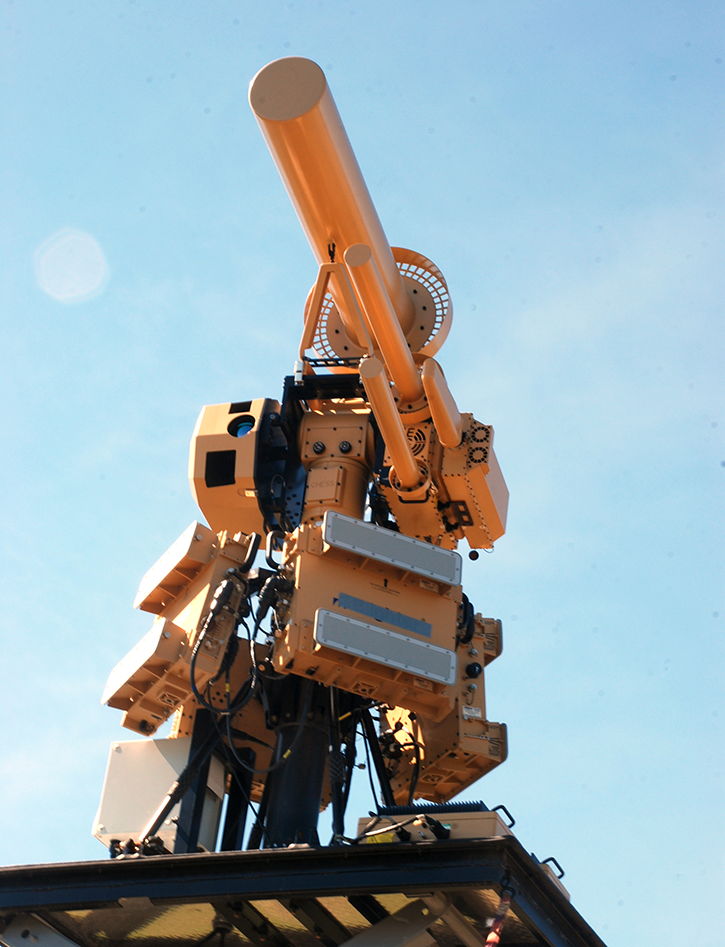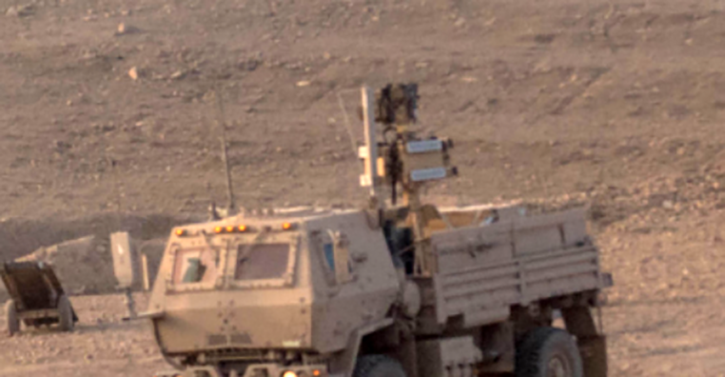
Determined to meet the challenge of hostile Unmanned Aerial Systems (UAS), the US Army acquired a number of countermeasures able to defeat such threats using electronic warfare.
The Islamic State in Iraq and Syria pioneered the use of commercially available micro drones armed for attack or suicide missions. These weapons were used on a large scale in the first days of the Iraqi attack on Mosul, but these attacks quickly ceased after the Iraqi forces received US C-UAS support. While the drone attacks were short lived in the battlefield, against an equipped and prepared combat force, they proved very successful as a propaganda tool, as videos of the attacks were published on social media.
The rapid containment of the micro-UAV attacks demonstrated the importance of integration of counter-UAS capabilities and techniques within a modern combat force. The US Army has already integrated some of the systems that have been used in Iraq, and others that are being tested in Europe, to familiarize operational planners and troops. Among the systems that recently proved its performance in Iraq is the AUDS, which deployed recently to Fort Sill, Oklahoma, to participate in the annual Maneuver Fires Integrated Experiment (MFIX).
The Anti-UAS Defense System (AUDS) is part of the US Army’s evolving Counter-Unmanned Aerial Systems (C-UAS) capabilities. AUDS provides forward units the capability to detect, locate and track all the drones operating in the area, identify each drone and defeat those systems deem hostile.
According to Tom Scott, president of LITEYE Systems, the company that markets the AUDS in North America, AUDS uses three different systems to carry out its mission. The Blighter radar and camera, provided by the British EO specialist Chess Dynamics, are used to detect drones and an electronic jammer provided by Enterprise Control Systems is used to defeat them.
AUDS uses a combination of four radars to gain full 360 degree coverage. Cueing from the radar use to point the camera at the target. Once a drone has been identified on camera, operators can set the system to automatically track the drone. AUDS also has the capability to defeat drones, using high power electronic jamming, similar to the use of jamming against radio-controlled improvised explosive devices (IED). Tha AUDS uses an electronic effector operating in three distinctive bands associated with different functions of the drones – Global Navigation Satellite System (GNSS) and two radio-control channels often associated with drone controls. Lack of navigation signal often aborts a commercial drone mission for safety considerations. Jamming of the control channel would force the drone to enter emergency mode and return to its operator, hover or land on the spot.
Similar to the EO payload the jamming module is also directional, employing antennae set generating a 20-degree ‘pencil beam’ that concentrates almost all radiated power on target. This method enables the system to operate in an environment where friendly drones are operating. In fact, some of the US operators have operated and tested the AUDS with an integral drone, to provide the users the capability to acquire and designate the drone operator for attack by friendly drones, or other means of precision attack.
Soldiers from 108th Air Defense Artillery came from Fort Bragg, N.C. to allow developers to see firsthand how Soldiers interacted with the system. Scott said he was pleased with how easily the Soldiers learned the AUDS and could now operate the system.
“It’s been pretty awesome,” said Pvt. Shamar Paulhill. “It’s a pretty easy concept to grasp. We’ve only been out here for three days and we already have it down. We are tracking, jamming stuff, and we brought down (many) drones.”
Paulhill and his battle buddy Pfc. Sergio Torres, both air missile defense crewmembers, explained how once they have acquired the target, they wait for instructions. If they jam the communication between the drone and the drone’s operator, the drone could return to its home base, remain hovering or fall from the sky.
While the AUDS is newer, Scott said their systems were rapidly deployed to units in October of 2016. Scott said feedback came almost immediately.
“My guys operating the systems (…) once they got it with the Soldiers and turned it on, the Soldiers called it ‘the day the drones stopped'” said Scott.

The Army ordered several AUDS systems to meet an urgent operational requirement to defeat drones operated by ISIS in Iraq and Syria. In January 2017 the US Army acquired several units. Based on the combat lessons gathered by users in Iraq, several modifications were made to the systems. According to Scott. One of the priorities is to make the system mobile, as the current configuration is a dismounted set using an electrical generator for power.
“The deployment was done in a real hurry,” said Scott. “Now we, as owners of the company, can sit back with the military and start to integrate this into other command and control, and mobile systems.”




















